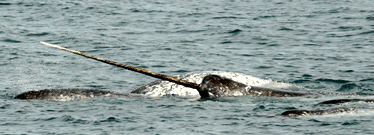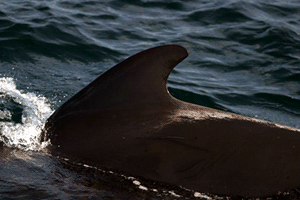| home | education | experience | publications & presentations | awards | involvements | contact me |
Education
Master of Science - Biology
Dalhousie University - (2006 - present)
| Goals: develop an individual identification method for the narwhal (Monodon monoceros), produce a population estimate, and examine narwhals movement patterns. |
This is a joint project with Marianne Marcoux, a PhD Candidate at McGill University. Please visit The narwhal Expedition website for more information on the project. |
|
Bachelor of Science with Honours - Marine Biology
Dalhousie University - (2002-2005)
Honours research project - The use of natural markings in studies of long-finned pilot whales (Globicephala melas)
Abstract |
|
Photo-identification using natural markings has been used for pilot whale (Globicephala melas) studies. However, none of these studies investigated the reliability of the marks used. To identify which mark types are reliable and which could improve the method, fifteen mark types, and their distribution within the population, were described. The rates of gain and loss of each mark type were calculated and the variability in visibility was investigated. Although the mark types associated with the current photo-identification method, the notch and the protruding piece, appear to be permanent, they allowed us to identify only 33% of our sample. The prevalence of all but two mark types is independent of the identifiability of a photograph. One of these is already used in the current photo-identification method. This independence indicates that the proportion of the population that is currently identifiable does not differ from the rest of the population in its susceptibility to factors causing marks, such as predation, and thus appears to be representative of the whole population. Using saddle patches in combination with the current photoidentification method would double the percentage of the identifiable individuals. However, due to limitations of matching software, the current method is easier to use. |
|
See Auger-Méthé & Whitehead (2007) The use of natural markings in studies of long-finned pilot whales (Globicephala melas) Marine Mammal Science pdf |
© Copyright, Marie Auger-Méthé, 2005-2007 All Rights Reserved.


